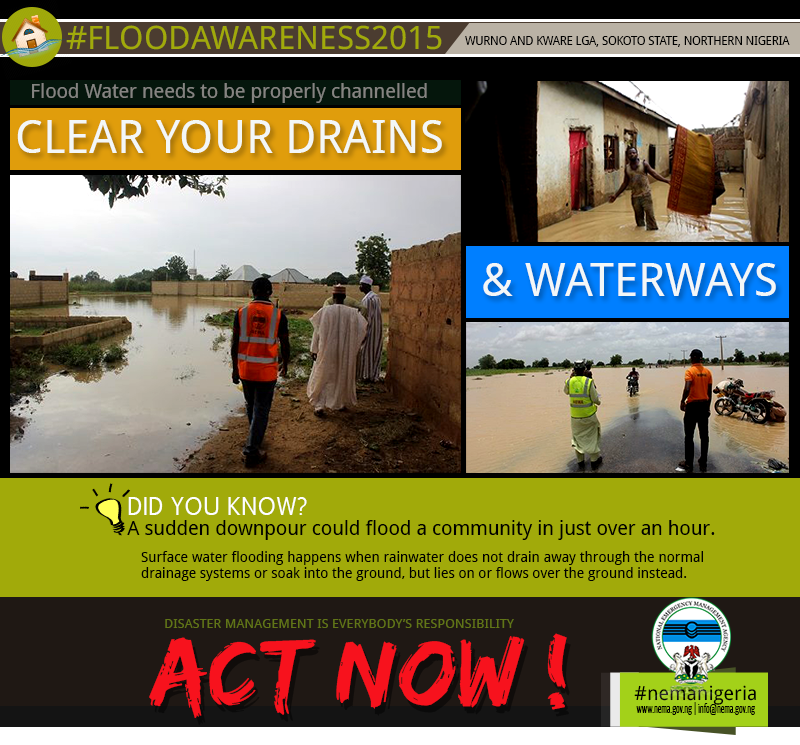
Key to understanding floods especially in areas around rivers and the sea in the various states in Nigeria is that climate changes are drastically changing and this has been reflected in the series of environmental challenges us currently experiencing.
A floodplain is the area that would naturally be affected by flooding if a river rises above its banks, or high tides and stormy seas cause flooding in coastal areas.
Recently about 37,610 hectares of farmland, 5,495 houses and 25,950 people were affected by flood in 12 local government areas of Kebbi, in Kebbi State Nigeria as reported by the National Emergency Management Agency. The Director-General of NEMA, Muhammad Sidi, made the announcement in Birnin Kebbi on Friday during a courtesy call on Kebbi Governor, Atiku Bagudu.
He identified areas affected were Argungu, Birnin Kebbi, Bunza, Kalgo, Dandi, Jega, Bagudu, Yauri and Danko/Wasagu as well as Koko/Besse, Suru and Shanga local government areas. These conditions have also become a challenge to other states in the country.
River flooding usually when a river cannot handle the amount of water draining into it from the surrounding land. Sea flooding happens when there are high tides and stormy conditions.
Flood defences built in the last five years to protect against river floods most at times have failed and not able to cope. This also applies to older defences and defences which protect against smaller floods. Flood defences that are not yet properly deigned and planned for in anticipation for floods, so that areas that are prone to floods can benefit from them. Flood defences do not completely remove the chance of flooding, however, and can be overtopped or fail in extreme weather conditions.
The Director-General emphasized that “NEMA could build the capacity of various response organisations and grassroots to prepare them to mitigate, cope and respond better to disasters through awareness and sensitisation campaigns and coordination of emergency response efforts.”
The director-general called on local communities to complement the efforts of the federal and state governments by not dumping refuse in water channels or erecting settlements on waterways.
He called on the relevant authority to reconsider the Zauro Polder Dam Project which had been abandoned in the state.
Mr. Sidi said the facility “was designed to serve as a buffer dam for excess water that might be released from Goronyo and Shagari dams in Sokoto State”.
Responding, Mr. Bagudu thanked NEMA for its recognition and support to the state and said the agency had justified its existence for the prompt response to any tragedy and disaster in the country.
“The effect of the flood is quite devastating as we are expected to produce more produce for the country but we will make it up by engaging fully in dry season farming,” the governor said.
Flood warning schemes should be set up for a number of areas that are considered to be at particular risk from flooding. Within these areas, proper warning should be in place to warn residents in advance when flooding may be likely and how severe the flooding could be. NEMA has also been publicising a number of flood warnings that are in force but they need to do more to arrest these flood environmental hazards in the country.